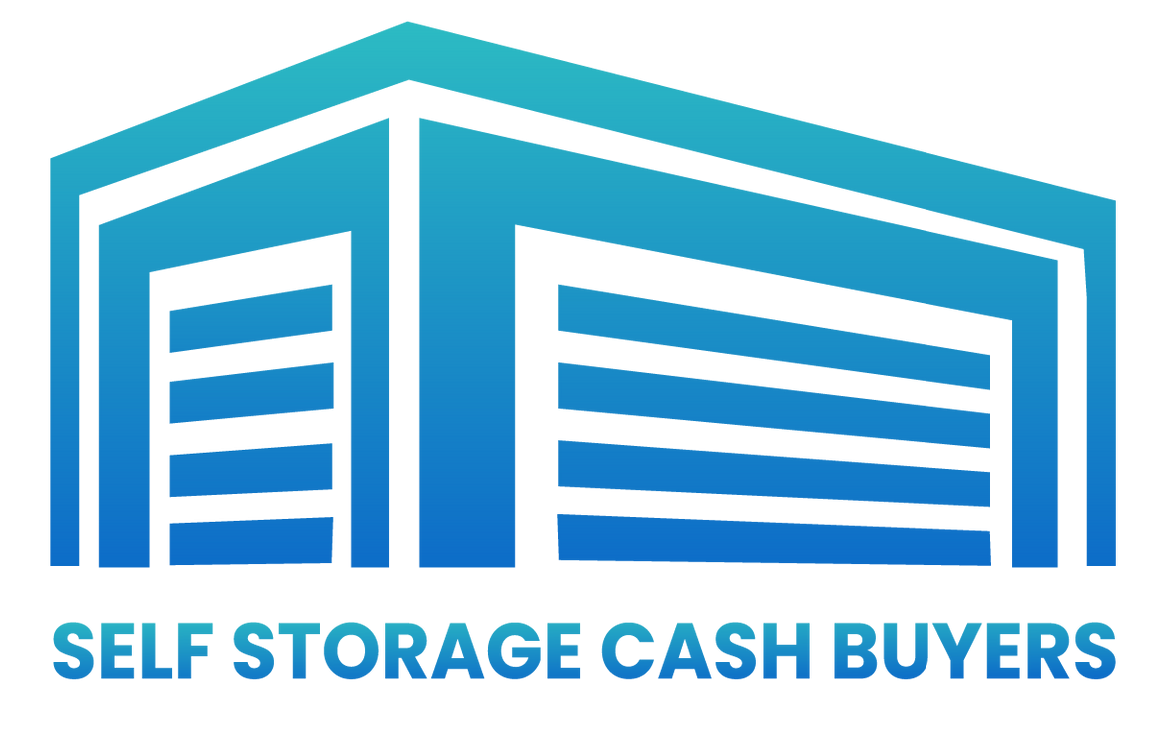How to Start Automating Your Self Storage Facility
Published on December 16, 2023
Nick Stevens
AUTHOR
Free Offer Form
In today's expanding self-storage market, managing facilities efficiently has become increasingly complex. The increasing demands of urbanization and economic growth can complicate matters.
As online transactions become more common, self-storage businesses are also expected to automate their processes.
It's time to let tenants handle renting, access, and move-outs with just a few clicks on their phones.
Elevate your self-storage business through automation for
more efficiency, security, and an enhanced experience for you and your valued customers.
Navigating Self-Storage Automation
Embracing this advancement goes beyond modern convenience—it's a strategic imperative.
Recognizing the profound benefits of automation adapted to businesses ensures higher productivity, reliability, and significantly reduced operating costs for every business.
Here's how an automated self-storage business keeps your company ahead in innovation.
What is Self-Storage Automation?
Automation in the self-storage business simplifies operations using technologies.
This involves using tools to automate various storage tasks, from automatic gates, self-service kiosks, and online reservations to bill payments.
Common indicators that a self-storage facility is automated include smart control systems using keypads, RFID cards, or biometrics instead of traditional locks.
There are also degrees to this embrace of technology, which range from partial to full automation.
This can range from facilities having kiosk machines onsite, without online tools or other techs, to having a fully automated kiosk or two onsite.
Essentially, it's letting technology take care of rent, security, customer service tasks, and potentially more within a self-storage facility.
How Does Self-Storage Automation Work?
Self-storage automation simplifies tasks using advanced techs like smart devices, kiosks, or sensors.
It manages access, security, and customer interactions, creating a seamless experience for operators and customers.
Here are 5 ways to automate your self-storage business.
- Do everything online
Besides a kiosk machine or keypad locks, create a user-friendly website, allow online transactions, set up autopay, and use digital rental agreements to make move-ins and outs hassle-free with online tools.
It's not just convenient for customers; it also makes your operations smoother and can reduce the number of on-site employees. - Set up self-storage kiosks
A self-service kiosk is an interactive touchscreen device that allows customers to rent units, make lease payments, and manage their accounts without having to speak directly with self-storage operators.
Self-service kiosks are especially useful for primarily unmanned facilities that are open 24/7. - Switch to automated access control
Switch from regular locks to an automated system using keypads, RFID cards, or biometrics to give tenants entry.
This not only boosts security but also reduces the need for self-storage managers. - Use a software-based control system
Unlike a storage kiosk that requires tenants to visit the facility, this digital tool can automate various tasks remotely.
It also differs from websites, primarily used for marketing, since it's designed specifically for a chief operating officer and tenants to manage the storage facility from anywhere. - IoT remote monitoring
Sensors connected to the Internet of Things, or IoT-enabled sensors, help remotely monitor your tenants' stored furniture, household goods, valuables, and keepsakes.
These sensors can detect security threats and environmental problems like water leaks or temperature changes, either based on occupancy triggers or unintentional cases.
Benefits of Self-Storage Automation
Self-storage automation makes managing places easier and improves things for managers and customers.
Adopting kiosk machines and online tools brings numerous benefits to businesses in the self-storage industry.
Now, let's explore the 5 key benefits of having an automated self-storage facility.
- Reduce costs: Automate tasks like booking and payments, cut administrative expenses, and free up resources for better customer service. You can even run a storage facility without staff.
- User-friendly: Cloud-based applications are easy to use and manage from anywhere. Integrating it with other tools, like your CRM, can make it even more intuitive.
- Enhances security: Automated security systems, including access control and surveillance, provide more protection for belongings and the facility as a whole.
- Offers 24/7 access: This ensures tenants can enter their units anytime. Also, operators no longer need to be on-site for late payments; integrated PC tools and electronic locks can auto-revoke entry.
- Increased revenue: Automated services like computer applications, websites, or self-service kiosks make storage facilities more modern, efficient, and competitive, which increases revenue.
Self-Storage Automation Software
Self-storage automation can be achieved differently, like through a kiosk, website, or computer application.
However, acquiring these online tools is the most challenging first step toward your facility's modernization.
Let's review the top management software you can integrate into your storage business.
Popular Self-Storage Automation Software
Self-storage programs are designed to automate tasks. After integrating it with systems like accounting and your website, start leveraging its capabilities for task automation.
Popular self-service software widely used in many storage facilities includes the following.
1. Innago
- Pricing model: Free
- Platforms supported: Web, Android, iPhone/iPad
Innago is a free, user-friendly property management computer application.
Their mission is to simplify renting for landlords of any size by offering easy tools to collect rent, screen tenants, list properties, manage work orders, and handle tasks effortlessly.
Innago aims to make property management accessible without the complexity and cost of other alternatives.
For example, kiosk machines range from $2,000 to $18,000, but you can save that money with Innago.
2. DoorLoop
- Pricing model: Subscription | Includes a free trial
- Platforms supported: Web, Android, iPhone/iPad
DoorLoop is a self-storage digital application with 127 features, including a variable rate management tool, dashboard, bank sync, auto-generated data reports, and QuickBooks integration.
While not entirely free, DoorLoop offers accessibility through the Web, Android, and iPhone/iPad.
This app is as easy to use as a self-storage kiosk, so you can make smart decisions, learn about your business, and manage your self-storage facilities from anywhere.
3. Easy Storage Solutions
- Pricing model: Subscription | Includes a free trial
- Platforms supported: Web
Easy Storage Solutions is a user-friendly web-based management computer program for small to medium-sized storage businesses.
It has a cloud-based access control system that lets you manage entry to your facility from anywhere with a web browser.
Its cloud computing system delivers fast innovation and flexible resources, with servers, storage, databases, networking, analytics, and intelligence delivered over the internet.
Easy Storage Solutions is also designed to work even during a power or internet outage.
Features of Self-Storage Automation Software
To automate your self-storage business effectively, you'll need to dive into the essentials of a self-storage application.
These automation tools streamline rentals, ensure secure access, and simplify billing processes. Here are some of their handiest features.
- Inventory Management: They usually have interactive site maps to show unit statuses to aid new renters.
- Billing and Payment Processing: Streamline the rental process and reduce wait times by enabling more customers to pay online, and avoid missed payments.
- Booking Portal: Provides a web-based portal or kiosk-like service for reservations and payments.
- Gate Code Integration: Synchronizes with gate code access, providing a unique access code for immediate entry, visitation tracking, and automated lockout for overdue payments.
- Reporting and Communication: Generate reports for business metrics and facilitate real-time reporting for informed decisions.
- Digital Documentation: This can include digital rental agreements, customer records, financial records, and maintenance records.
How to Choose the Right Self-Storage Automation Software
Consider your needs and business practices before buying software for your automated self-storage facility.
Do you need a basic tool to track tenant info or a more robust solution for printing notices, charging rent, and keeping auto-generated data reports?
- Scalability: Choose a tool that can grow with your business and integrate with existing systems.
- Analytics and reports: Ensure that your tool offers analytics and reports for operators.
- Usability: Prioritize user-friendly applications for effective navigation and use.
- Security features: Prioritize programs with robust security measures.
- Cost: Compare prices and ensure quotes include all the features you or the customer needs.
- Technical support: Choose an application with good customer support and a free demo.
Automating Self-Storage Operations
Make optimizing your storage facility operations easier by embracing this new technology and maximizing its benefits and features.
Here's how to automate rental processes, enhance security, and manage billing efficiently.
Automating the Rental Process
Simplify renting at your facility by installing self-storage kiosks and using online systems for reservations and payments, either through a website or a computer program.
Instead of trying to get your staff's attention, potential customers can use an online portal or kiosk to rent a unit or gain insights into what your storage facility offers.
Tenant-management solutions help complete tasks easier and allow customers to rent self-storage units without direct interaction.
A variable rate management tool also helps you generate pricing adjustments based on occupancy triggers and unit types.
Automating Security and Access Control
Automated access control systems, including electronic keypads, biometric authentication, and surveillance video cameras, are crucial for enhancing self-storage security and keeping your customer's belongings safe.
It grants tenants entry to their units and monitors the storage facility for security threats.
If renters need a facility-access code, it can be delivered automatically via mobile app, email, or text message to prevent any frustrating wait times.
This simplifies and lessens the workload on staff who would otherwise need to handle these tasks manually.
Automating Billing and Payment Processing
Automating billing and payment processing in self-storage facilities involves implementing autopay enrollment, online payment portals, and automated late fee charges.
With automated billing, tenants can easily set up autopay for timely payments through secure portals, and late fees are calculated and charged automatically.
Businesses can also schedule digital documentation of a tenant's monthly payment dues by setting up a recurring bill.
Challenges and Considerations in Self-Storage Automation

Automation tools can provide many benefits for businesses but also present some challenges. Self-storage facilities will also need to overcome any potential issues.
Here are some challenges faced by many automated self-storage business facilities.
Security Concerns
Self-storage kiosks and digital applications can face security threats, including physical vulnerabilities like theft or vandalism for kiosks and drive corruption for online tools.
Specific threats include kiosk break-ins, program vulnerabilities exploited for unauthorized entry or malware, and staff falling victim to phishing attempts.
Install security cameras and alarms around each kiosk and keep them in well-lit areas.
For online tools, training storage operators to be vigilant against phishing, using strong passwords, and installing anti-virus programs can help.
Integration with Existing Systems
Selecting software that easily integrates with your existing systems is crucial when adopting self-storage automation.
Merging new technologies with established ones may bring challenges like data inconsistencies, workflow disruptions, and compatibility issues.
You may also need extra computer hardware space to install these applications.
Despite the potential challenges, integrating a self-service kiosk or online portal is worth the effort in the long run.
However, the financial aspect of integrating these systems can pose challenges, especially for startups.
Training and Adoption Challenges
Introducing automation may invite resistance from staff accustomed to traditional methods. However, training your staff on how to use self-storage automation software and hardware is important.
You should also have a plan to communicate automation's benefits to your customers and encourage them to use the self-service options available.
Complicated or slow automation systems might make it harder for people to use them.
For example, suppose the software you buy is always slow. In that case, tenants might prefer using the self-service kiosk at the storage facility—which can be time-consuming and defeats the purpose of automation tools.
Future of Self-Storage Automation
The future of self-storage automation is bright.
Technological advancements, from interactive kiosks to different online automation tools, are making it possible to develop increasingly sophisticated and effective self-storage solutions.
Technological Advancements
Having a self-service kiosk at your facility is already a form of automation. However, storage facility owners can go further and add smart access control and intelligent security systems.
In simpler terms, what used to be done physically through kiosks can now be managed online.
The future of self-storage facilities looks promising with emerging technologies like the following examples.
- Smart Facility Management integrates IoT devices to monitor storage unit conditions like temperature and humidity.
- Intelligent Security Systems use advanced surveillance and alarms to enhance overall facility security.
- Self-service Kiosks empower customers with tasks like renting units and making payments, reducing staff workload for improved convenience.
Potential Impact on the Industry
As automation becomes more prevalent in the self-storage industry, the competitive landscape will likely shift.
Businesses that embrace and effectively implement automation stand to gain a significant edge in efficiency, cost savings, and customer satisfaction.
Here's what a semi or fully-automated self-storage facility impacts.
- Convenience and Time-saving: Customers can rent units, make payments, and access their belongings without staff interaction, saving significant time, especially during peak hours.
- Lower Labor Costs: Automation reduces labor expenses by automating tasks and freeing up staff for customer service and facility maintenance.
- Empowered Customers: Self-service options provide autonomy, allowing customers to independently manage transactions and high-value tasks.
- Valuable Customer Data: Self-service tech aids in collecting essential customer data and tracking popular facilities, usage patterns, and amenities.
- Reduced Human Error: Kiosk machines and online applications can minimize the risk of human errors, like miscalculating payments. It also ensures accurate charges and precise financial records.
- Paper Waste Reduction: Digital self-service solutions, like an on-site kiosk or online portals for rentals, payments, and contracts, can contribute to a decrease in paper usage.
Frequently Asked Questions
Check out this section to learn more about self-storage automation.
What Is the Role of Automation in Self-Storage?
Adopting user-friendly technologies can improve the customer's experience and potentially boost your occupancy rates. It can also reduce costs by reducing the facility's manpower requirements.
Self-storage uses tech like automatic gates, kiosks, and online tools for rent, security, or chatbots that answer questions from both existing and new tenants.
Simplifying the rental process through technology not only enhances self-storage customers' satisfaction but also boosts revenue and overall business efficiency.
How Can Self-Storage Automation Software Benefit My Business?
Self-storage automation can benefit your business in many ways, including:
- Organize your business: Keep track of unit availability, customers' information, and billing details in one central location.
- Be more efficient: To innovate many tasks associated with running a self-storage facility, you free yourself and your staff to focus on other high-value tasks.
- Provide better customer service: Quickly and easily access tenant information for exceptional customer experience.
- Improve security: Monitor your facilities and track who is coming and going with automatic ID checks and unit controls.
- Raise prices when needed: With a variable rate management tool, you can quickly and efficiently increase costs for more in-demand services.
- Generate more revenue: Make it easier for customers to reserve and pay for storage services with a modern, mobile-friendly website and fine-tuned online bookings and payments flow.
- Make better decisions: Create decisions based on trends and data reports instead of hunches.
What Are the Challenges of Implementing Self-Storage Automation?
Implementing self-storage automation comes with challenges, such as:
- Security Concerns: Self-storage kiosks and online tools are vulnerable to physical attacks, cyber threats, and human errors.
- Integration Issues: Integrating new technologies with existing systems may lead to data inconsistencies, workflow disruptions, and compatibility problems.
- Training and Adoption Challenges: Many operators need training to adopt these new tech systems smoothly. Troubleshooting assistance may be common for some time after implementing tech-based storage solutions.
- Potential Costs: Although self-storage automation services can reduce costs in the long term, the upfront cost of buying these technologies can also be a significant hurdle, especially for startups.
How Can I Choose the Right Self-Storage Automation Software?
Choosing the appropriate self-storage automation software requires carefully evaluating your needs and business processes.
Begin by determining if you need fundamental tools for tenant tracking or a more extensive solution for tasks such as printing notices, charging rent, and generating auto-generated data reports.
Look for programs that prioritize scalability, analytics, usability, security features, and technical support.
To further reduce costs, thoroughly compare prices and confirm that the quotes include everything you require, whether for software or kiosk solutions.
What Does the Future Hold for Self-Storage Automation?
The future of self-storage innovation looks promising with evolving technologies.
The self-storage industry is moving towards seamless integration. It's like the difference between a traditional self-service kiosk and advanced solutions like smart access control and intelligent security systems.
This shift allows tasks, once handled physically, to transition online, promising efficient and secure operations.
Incorporating IoT-connected devices in facility management leads to more advanced self-storage facilities.
Conclusion
The move to self-service kiosks and digital apps means the future of the self-storage industry will become smoother, safer, and more satisfying for customers.
Self-storage automation not only saves costs and boosts security but also brings in more money.
Empowering tenants to manage tasks like renting and entry through their phones enhances overall efficiency.
Just imagine the possibilities when you start integrating AI assistants into your self-storage business!
Looking ahead, the industry is indeed gearing up for even more advanced tech, like smart facility management and super-smart security systems.


